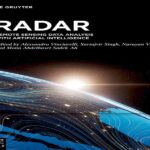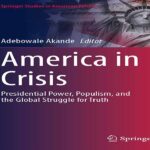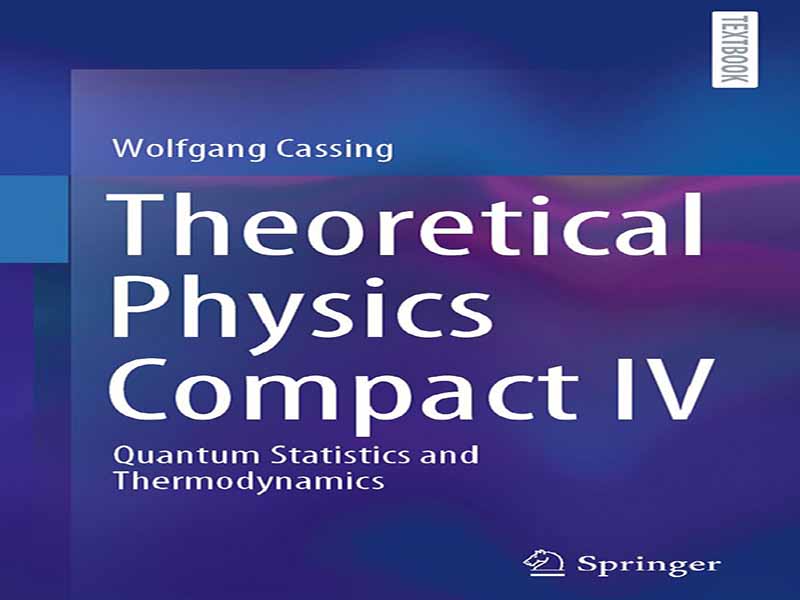- عنوان کتاب: Theoretical Physics Compact IV -Quantum Statistics and Thermodynamics
- نویسنده: Wolfgang Cassing
- حوزه: آمار کوانتومی
- سال انتشار: 2025
- تعداد صفحه: 184
- زبان اصلی: انگلیسی
- نوع فایل: pdf
- حجم فایل: 4.06 مگابایت
این کتاب، کتابی درسی در مورد آمار کوانتومی و ترمودینامیک ارائه میدهد و به ویژه برای دانشجویان کارشناسی در سال آخر کارشناسی فیزیک نظری مناسب است. پیشنیازها، آشنایی با دینامیک کلاسیک همیلتون، مکانیک کوانتومی و فرمولبندیهای آن در نمایشهای مختلف است. دانش مقدماتی در مورد الکترودینامیک، به ویژه در مورد دوقطبیهای الکتریکی و مغناطیسی ابتدایی و برهمکنشهای آنها با میدانهای الکترومغناطیسی خارجی، مطلوب است. برخلاف کتابهای استاندارد در مورد ترمودینامیک، ما با ترمودینامیک پدیدارشناختی شروع نمیکنیم، بلکه مستقیماً از دینامیک کوانتومی با تعریف عملگر آماری در فضای هیلبرت چندذرهای شروع میکنیم. این امر امکان تعریف آنتروپی به عنوان میانگین آماری لگاریتم منفی عملگر آماری و ایجاد چارچوبی برای فرآیندهای برگشتناپذیر در سیستمهای کلان را فراهم میکند، حتی اگر معادلات اساسی حرکت برای ذرات بنیادی از برگشتپذیری میکرو پیروی کنند. سپس گروههای آماری با فرضیه حداکثر آنتروپی مشخص میشوند و گروههای میکروکانونی، کانونی، کانونی بزرگ و عمومی تعریف میشوند که به دانش در مورد انرژی، تعداد ذرات و حجم بستگی دارند. اگر برخی از این کمیتها فقط به طور متوسط شناخته شده باشند، پارامترهای لاگرانژ مربوطه معرفی میشوند که به ترتیب مقادیر متوسط را تضمین میکنند. این پارامترهای لاگرانژ بعداً به دما، پتانسیل شیمیایی و فشار مربوط میشوند. یکی دیگر از مسائل مهم مکانیک کوانتومی، تقارن تبادلی حالتهای چند ذرهای ذرات یکسان است که در مکانیک کلاسیک معادلی ندارد، یعنی تقارن تبادلی نسبت به تبادل ذرات: توابع موج باید نسبت به تبادل ذرات متقارن یا پادمتقارن باشند، که منجر به جداسازی بوزونها و فرمیونها با قوانین کوانتیزاسیون متفاوت برای تعریف عملگرهای ایجاد و نابودی میشود. این تقسیم فضای هیلبرت در بوزونها و فرمیونها پیامدهای مهمی دارد، به عنوان مثال. برای گرمای خاص، ضریب انبساط حرارتی و تعداد اشغال تک ذره در دماهای پایین. تنها در صورت چگالی کم و/یا دماهای بالا، این کمیتهای مختلف در حد کلاسیک ادغام میشوند. اگر تعداد ذره N بزرگ شود، گروههای مختلف به طور مستقل به توابع توزیع کلاسیک تبدیل میشوند، زیرا نوسانات نسبی در انرژی و تعداد ذرات به صورت 1/√N مقیاس میشوند. مطابق با گروههای مختلف، پتانسیلهای ترمودینامیکی به عنوان تابعی از متغیرهای طبیعی تعریف میشوند و دیفرانسیلهای کل آنها مشخص میشود. این منجر به چند رابطه ماکسول میشود که میتوان از آنها برای محاسبه کمیتهای ترمودینامیکی استفاده کرد. سه قانون ترمودینامیک فرموله و اثبات شدهاند و نشان داده شده است که گاز ایدهآل کلاسیک در دماهای پایین قانون سوم ترمودینامیک را نقض میکند. تغییرات حالت ایزوکوریک، ایزوباریک، ایزوترمال و آدیاباتیک برای ترمودینامیک چرخه کارنو و موتور اتو مورد بحث و استفاده قرار گرفتهاند. علاوه بر این، انحرافات کوچک از حالت تعادل بررسی شده و ارتباط بین نوسانات خودبهخودی کمیتهای فیزیکی حول مقادیر میانگین آنها در تعادل آماری و انحرافات اجباری از مقادیر میانگین به دلیل برهم خوردن تعادل توسط اختلالات خارجی بررسی شده است. نشان داده شده است که این دو پدیده برای اختلالات خارجی ضعیف ارتباط نزدیکی دارند و بیان آنها در قضیه نوسان-اتلاف بیان میشود. برای این منظور، نظریه اختلال ترمودینامیکی را معرفی کرده و توابع پاسخ را برای مثالهای مختلف مانند رسانایی الکتریکی یا نویز مقاومت محاسبه خواهیم کرد.
This book provides a textbook on quantum statistics and thermodynamics and is in particular suited for bachelor students in their last year of bachelor studies in theoretical physics. Prerequisites are a knowledge of classical Hamilton dynamics, quantum mechanics and its formulations in different representations. Elementary knowledge about electrodynamics is welcome in particular about elementary electric and magnetic dipoles and their interactions with external electromagnetic ields. Somewhat contrary to standard books about thermodynamics we will not start with the phenomenological thermodynamics, but directly from quantum dynamics with the deinition of the statistical operator in the many-particle Hilbert space. This opens up the possibility to deine the entropy as the statistical average of the negative logarithm of the statistical operator and to set up the framework for irreversible processes in macro-systems even if the basic equations of motion for elementary particles obey micro-reversibility. Statistical ensembles then are speciied by the postulate of maximum entropy and microcanonical, canonical, grand-canonical and general ensembles are deined, which depend on the knowledge about energy, particle number and volume. If some of these quantities are only known on average, then corresponding Lagrange parameters are introduced, that guarantee the average values, respectively. These Lagrange parameters will be related to temperature, chemical potential and pressure later on. Another important issue of quantum mechanics is the exchange symmetry of many-body states of identical particles, which has no counterpart in classical mechanics, i.e. the exchange symmetry with respect to particle exchange: the wave functions have to be symmetric or antisymmetric with respect to particle exchange, which leads to the separation of bosons and fermions with different quantization rules for the deinition of creation and annihilation operators. This splitting of the Hilbert space in bosons and fermions has important consequences e.g. for the speciic heat, the thermal expansion coeficient and the single-particle occupation numbers at low temperatures. Only in case of low densities and/or high temperatures these different quantities merge to the classical limit. Independently, the different ensembles go over to the classical distribution functions, if the particle number N becomes large, since the relative luctuations in energy and particle number scale as 1/√N. In line with the different ensembles thermodynamic potentials are deined as a function of the natural variables and their total differentials are speciied. This leads to a couple of Maxwell relations that can be employed to compute thermodynamic quantities. The three laws of thermodynamics are formulated and proven and it is shown that the classical ideal gas violates the 3rd law of thermodynamics at low temperatures. Isochoric, isobaric, isothermal and adiabatic changes of state are discussed and employed for the thermodynamics of the Carnot cycle and the Otto engine. Furthermore, small deviations from equilibrium are investigated and the connection between spontaneous luctuations of physical quantities around their average values in statistical equilibrium and forced deviations from the average values due to disturbances of the balance by external perturbations. It is shown that these two phenomena are closely linked for weak external perturbations and ind their expression in the luctuation-dissipation theorem. To this aim we will introduce the thermodynamic perturbation theory and compute response functions for various examples like the electric conductivity or the resistance noise.
این کتاب را میتوانید از لینک زیر بصورت رایگان دانلود کنید:
Download: Theoretical Physics Compact IV -Quantum Statistics and Thermodynamics



































نظرات کاربران